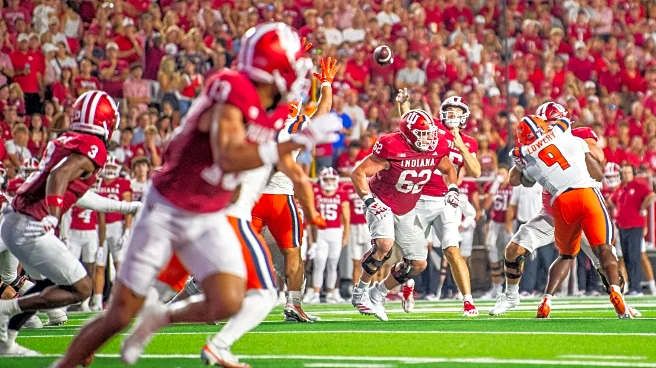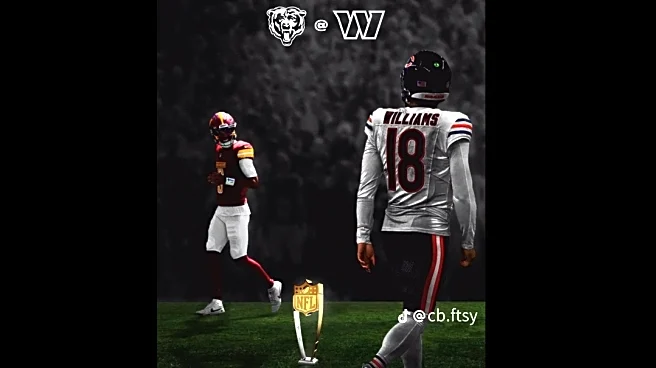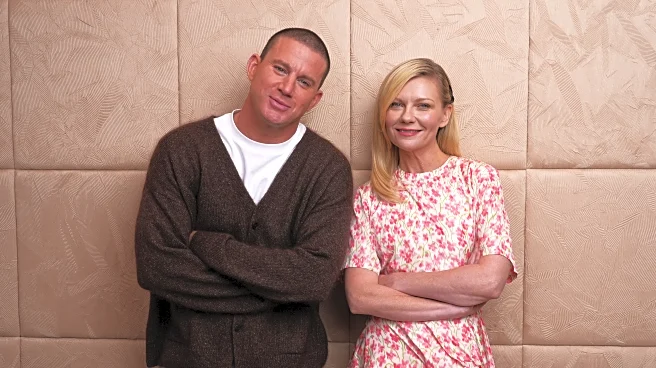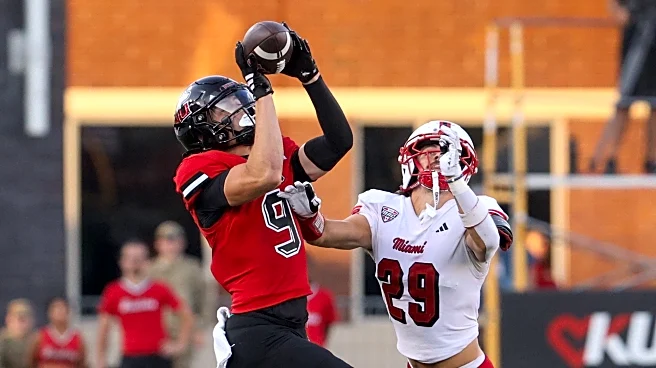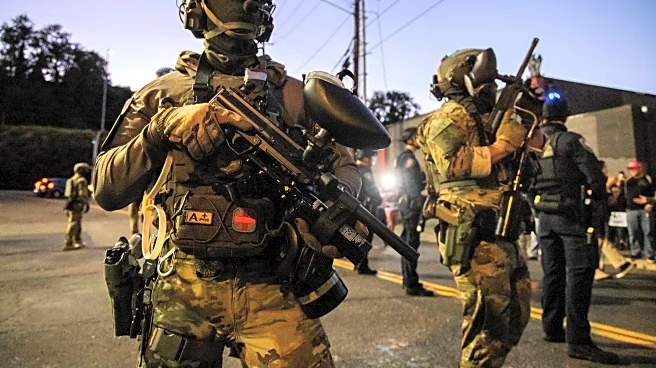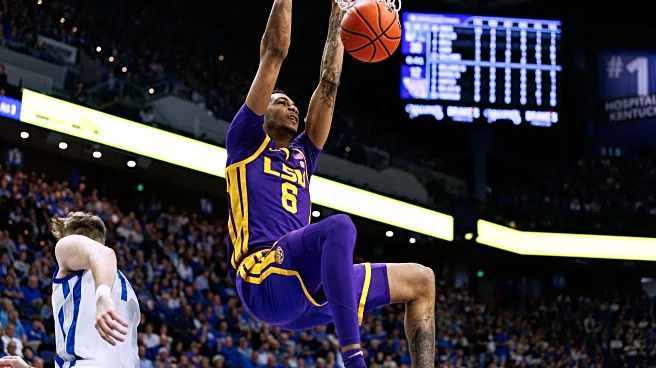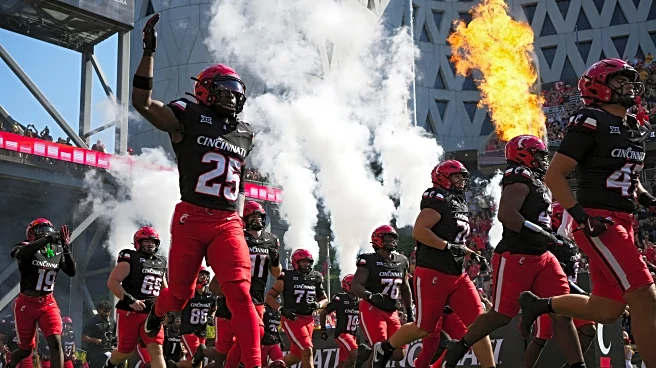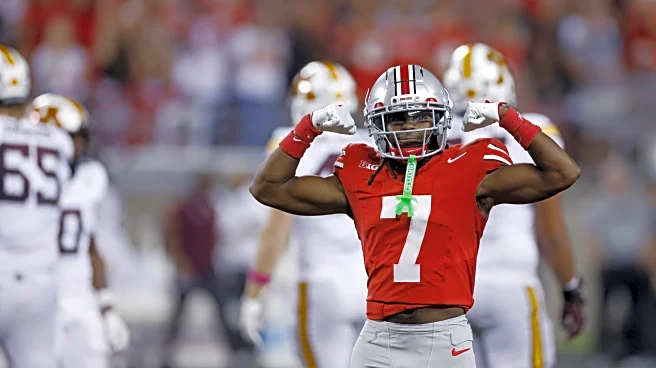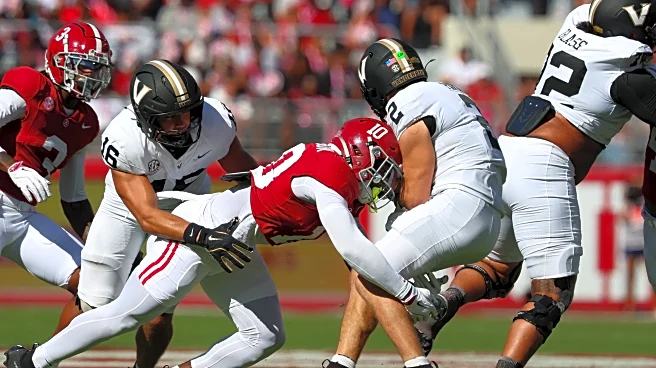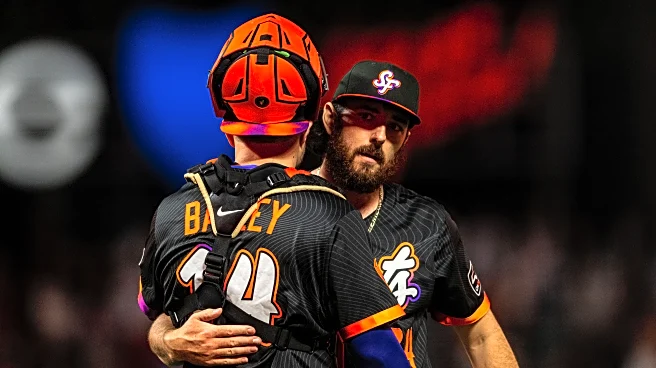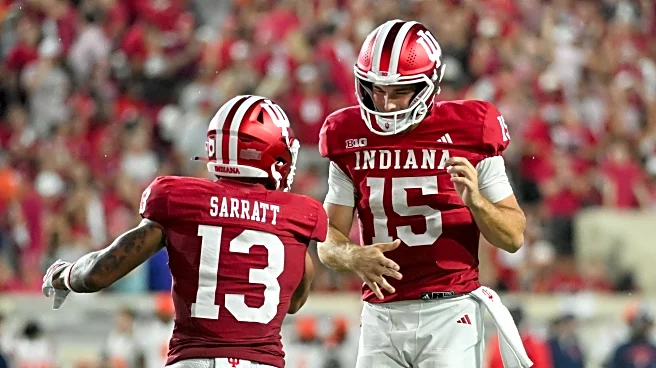Special thanks to L.C. Norton of SB Nation’s Indiana coverage for joining me on this week’s podcast to discuss the Hoosiers’ roster:
This site — with L.C.’s help and insights — was one of the very few in the Summer of 2024 which correctly predicted Indiana’s successful first season under new head coach Cignetti, noting at the time a remarkably well balanced and evaluated roster for such a total overhaul which had learned the lessons from previous mass turnover case studies, as well as bringing modern
schematic concepts to a copycat league vulnerable to disruption.
I mostly see the same things out of the 2025 team, and the attendant successes – using the non-conference slate as a skunkworks for some final experimentation with concepts and personnel before selecting the best for conference play, a QB well versed in the core concepts of the playbook which many conference defenses have no clue how to stop, and robust transfer portal usage to identify veteran Group of 5 players who outperform their ostensibly Power conference peers.
To the extent there’s been a shift in the Hoosiers’ approach in 2025, it’s been a tightening of the personnel rotations compared to the 2024 team I charted – they’re focused much more on feeding a couple of stud wideouts, have a very concentrated group in the defensive front, and other than one corner who missed last week (and should be back on Saturday) haven’t rotated the secondary at all. Now that they’re into the conference slate, there are effectively 28 main players for both sides of the ball combined during meaningful play, most of whom were significant contributors to last year’s team and the rest were targeted portal acquisitions (two of the portal guys are both, sort of – former Indiana players who transferred out and have now returned). It looks like Cignetti is really locked into a tight group of highly productive guys who know the gameplan.
Offense

Indiana’s offense under OC Shanahan in 2024 had at its core an RPO scheme that made most Big Ten defenses — trained for years to stop the run at all costs — primed for detonation as their defensive keys would clear exactly the throwing lanes that Shanahan exploited for consistent intermediate passing gains. It was then supercharged in 2024 by two more factors – first, that Cignetti had brought on board an enormous variety of productive wide receivers and allowed the five who best fit the offense to prove themselves in camp, such that the top five targets in-season all had nearly identical target counts, success rates, and adjusted YPT figures during meaningful play; second, fifth-year senior quarterback Kurtis Rourke was a veteran of multiple offenses and had access to several toolkits beyond the bread-and-butter RPO plays. These things meant defenses had no idea what was hitting them – passes could go to any wideout on the field, to any type of route, and they were set up for big yards after the catch since they couldn’t concentrate on anyone and the talent was all exceptionally productive.
From reviewing the roster, charting their games, and talking with L.C. this week, it’s clear that the 2025 Hoosiers have gone about constructing their offense in the same way, keeping the structure and returning productive personnel in position while replacing key players one-for-one and replicating the testing procedures during the early Fall. But it’s also clear to me that the buildout compared to 2024 has only been partial, with certain elements on the blink, and as such week to week different defenses have had wildly different levels of success against Indiana.
During the first couple of weeks Indiana was in shakedown, as expected – the same thing was true in 2024, and as L.C. and I discussed, some weird-looking stats from those games aren’t really a cause for alarm in and of themselves just like they weren’t against a softer non-con last year. But notably, the thing the Hoosiers were trying out was whether new starter #15 QB F. Mendoza, a transfer from Cal where he’d taken over mid-2023, could execute more than the core RPO playbook, and if there were any viable receivers beyond the two returning standouts, #3 WR Cooper and #13 WR Sarratt – in the opener they hadn’t used any of their core plays or even targeted Cooper at all until a couple minutes left in the 1st half and Sarratt not until the 2nd half.
L.C. and I came to the same conclusion, and evidently Coach Cignetti did too – the non-RPO stuff just wasn’t working. Mendoza was taking too many hits and putting the ball in danger when trying to do full progressions, and routes for wide receivers not named Cooper or Sarratt weren’t producing desired results. In a departure from Rourke’s wide playbook in 2024, during conference play Mendoza’s passes have narrowed to just the core RPO playbook and passing has been concentrated just on the top two receivers, not the full range of five wideouts like last year (tight ends and running backs are also not really being targeted for downfield plays except a rare dumpoff or screen, though this is in line in 2024’s pattern).
The results from week to week are stark, once garbage time is excluded:

Indiana’s week 4 conference opener was a unique confluence, as Indiana’s offense had pulled out all but their most effective RPO plays, and Illinois’ defense in the first half was monomaniacally focused on stopping the run. The Illini did so by constantly crashing the box on any hint of an exchange (although careful film study showed this probably wasn’t necessary, making this an even more foolish gameplan from DC Henry), and opening up the inside throwing lane for precisely the type of RPO slant pass that had been Mendoza’s calling card since I started studying his tape crushing USC’s equally hapless defense in 2023.
Iowa took a different defensive approach, with DC Parker’s trademark conservatism on early downs that deactivated the RPO threat and punishing blitzes which have always given both this line and Mendoza difficulty on late downs. Indiana needed 10 points by the skin of their teeth at the end of each half — three on a last-second field goal drive fueled by a personal foul in the first half, and a seven coming on a broken tackle in which Sarratt ran the whole field because there was no safety as Parker sent everybody on an overload blitz at the end of the second half — to overcome what in second-order wins was algorithmically a road loss in Kinnick Stadium.
Here’s a representative sample of the successful passing offense:
- :00 – This was Sarratt’s first target of the season, behind the chains in the 3rd quarter. It’s a bread-and-butter double slant with Cooper as the inside receiver and Sarratt outside, and very difficult to defend in man unless the corner takes some risks by playing with inside leverage or presses much tighter than this (because it potentially gives up the sideline). Zone tends to be safer, with the backer taking over Cooper’s route, the nickel moving to Sarratt, and the corner playing the sideline, but that’s obviously not the defense’s posture here.
- :12 – Excluding obvious goalline situations, the Hoosiers pass more than 64% of the time out of 12-personnel or heavier, and they’ve never thrown to a TE out of it outside garbage time – more often than not the extra tight end is just more bait to get the defense to step down on play-action or the RPO, as it pays off here when eight (!) defenders come down and leave just a corner apiece and one high safety for the wideouts. The CB’s leverage makes defending this without help in the lane impossible and the safety’s conflict makes him literally fall down on the job.
- :37 – The entire defense chases the strongside run (and couldn’t stop doing so, robotically, for the entire first half), leaving no help for the corner who’s immediately beat in press. The extra help stopping the run was patently unnecessary here, if the read backer had bailed into coverage and Mendoza handed off it would have been a massive TFL.
- :54 – Iowa’s defense played Indiana in a more sophisticated manner, and required defeating with better athleticism. Here they’ve got their best corner jamming up Sarratt and have layered the nickel and free safety over Cooper. The nickel hands off Cooper when he goes deeper in order to cover the underneath layer, but the leverage advantage is way too much for the safety who started out this far inside – there’s no way he’s going to catch an athlete like Cooper heading to the pylon.
Cooper and Sarratt are well on their way to reproducing their 2024 per-target stat lines, currently they’re both at about a 65% success rate with Cooper at 11.9 adjusted YPT and Sarratt at 9.2. Those are well above the championship threshold, though I expect them to level off a bit as conference-play data is incorporated into the year-long sample, and in line with what all five main receivers produced last season. In replacing the three departures from the 2024 WR corps — Miles Cross, Myles Price, and Ke’Shawn Williams — who had similar target counts and per-target statlines last year, Indiana’s options were two returners who didn’t really play in 2024, three very experienced transfers, and three true freshmen.
One of the transfers unfortunately got hurt and will miss the season, #9 WR Morris from Michigan, and they’ve had a rough go with all the other new faces. Both #0 WR Brady, a late add from Cal who had previous experience with Mendoza, and #2 WR Jackson from Appalachian State have disappeared from the rotation, with L.C. telling me they just weren’t working out in the system and Jackson is probably taking a redshirt to transfer out. They tried out one of the true freshmen in the non-con, #6 WR Bond, but haven’t thrown him the ball during conference play, as well as a lightly used returner #80 WR Becker and even a walk-on #17 WR Wasserstrom, but they’re not getting even getting reps in conference play.
The only other receiver besides Cooper and Sarratt with a substantial amount of targets — the lion’s share of them in the non-con, as they were part of the non-RPO stuff that got pulled out — is the returner #7 WR E.J. Williams, who as of recent games is exclusively used on crossing routes or as a redzone target as a taller receiver. L.C. and I discussed Williams as being something of a parallel to Donovan McCulley – he’s probably not a bad receiver at all for a different offense, with a high talent rating and a productive prior year in 2020 at Clemson, but his dimensions are something of a mismatch for the main stuff Shanahan wants to do. After controlling for actually catchable balls I put his per-target success rate at 50/50 and 7.5 YPT, well behind the main pair.
Cooper is pretty dynamic in the open field, Sarratt is a bit bigger and tends to be the go-to guy when the chips are down because he can muscle through tackles for extra. The most interesting thing on my tally sheet is that Sarratt’s contested catch rate has come way down in 2025 – it wasn’t great in 2024, about five points off median, but it’s very close to zero so far this year. That is to say, during meaningful play in 2025 FBS games I have essentially never seen Sarratt catch a ball in which he didn’t have a full yard’s clearance from the DB.
Here’s a representative sample of unsuccessful passing plays:
- :00 – Indiana’s downfield passing offense has a 55% success rate when facing four or fewer pass rushers, but only a 39% success rate when blitzed. While late-down blitzes (2nd & long, 3rd & medium/long) are most effective, there’s no down or distance in which blitzing is less effective for defenses than not blitzing if they think it’s going to be a pass. The basic reason why is that the o-line generally shows poor pickup strategies and leaves a free rusher, and there are limited outlets for Mendoza outside of the core scheme, as here when four linemen block two rushers, no one picks up the backer, and the QB launches the ball to Williams in traffic. L.C. referenced this play on the podcast as earning a reprimand from the coach.
- :17 – Kennesaw State, a team which had won two FBS games in the history of its program at this point (though is now on a three-game streak as of Thursday night), showed no real trouble defending Sarratt on outside routes, here running stride for stride out of press man and maintaining downfield position the whole way. Mendoza needs to be much more pinpoint if he’s going to attempt this contested throw, the ball has to be placed on Sarratt’s outside shoulder, lower and away from the defender, not high and inside for the breakup. I’d advise going elsewhere, but everybody else on the mesh-sit is also locked up.
- :30 – Here the defense crowds the line, then bails the backers on the underneath routes. The tackles tend to respond by immediately taking the narrow lane rushers and leaving the wide rushers for the RB and … fate, I guess. Mendoza backpedals to buy time and this backfoot heave is not an anomaly.
- 1:00 – This time the blitz is picked up but Mendoza’s timer is nonetheless accelerated, just as in 2024 Shanahan has a one-route solution for pressure that the QB goes to over 87% of the time (the other 13% are sacks, scrambles, or throwaways). Again Iowa has their top corner on Sarratt who’s got him played tight, and the contest is too much for the receiver – the ball goes through his hands and pops him square in the forehead.
In the run game, Indiana has replaced both of the main backs who evenly split carries last year, Justice Ellison and Ty Son Lawton (although Ellison remains with the team as a quality control coach). #8 RB Black, another of the JMU transfers who originally came over in 2024 and got the third most carries last year, is getting about 40% in 2025, while Maryland’s lead back for the last several years, #1 RB Hemby is leading the room with 60%.
In the non-con, #29 RB Beebe from UAB was getting a significant number and graded out the best of anyone, running in a different style, but unfortunately L.C. told me he took a season-ending injury in the FCS game. At this point the third-most used back is redshirt freshman #28 RB Martin, who saw extensive run in the second half against Illinois when the game was well decided, but I don’t have him on my tally sheet at all during meaningful play, and L.C.’s impression was that the Hoosiers would stick with Black and Hemby outside of garbage time and reserve Martin for cleanup or relief in case of injury only.
Both Black and Hemby have identical per-carry success rates this year, about 53%. That’s about the same as Black graded out last year, though a jump of about five points in efficiency for Hemby largely because he’s no longer running behind an absolute trainwreck of an offensive line as he was with the Terps. I’ve been down on Hemby for a while because other backs at Maryland, in the same offense with the same line, have graded out better with higher efficiencies and YPC averages for the last several years of my charting of that team (on this Summer’s podcast, my counterpart at Testudo Times Matt Germack called it a long attempt to recapture Hemby’s 2022 season).
So far this year, Black is outperforming Hemby by +1.5 YPC on average, 6.5 vs 5.0, which is an enormous gap and makes it hard to justify a 60/40 split in the other direction (Black has had one long very long run on the border of garbage time which skews the numbers somewhat, but pulling that out still leaves it at 5.8 YPC for Black, a substantial advantage). L.C. brought up Hemby’s ability to generate positive yardage even when the blocking isn’t there, which I’ve certainly seen at both schools, though I think Black is pretty good at that as well.
On the offensive line, last year there was something of an injury shuffle on the interior which took L.C. and I took some time during the Summer to sort through (I had a player pegged as a 6th man and backup, when actually he was the intended starter and pieces were being moved around to deal with problems).
The upshot is that I think they’ve gotten stronger at a couple of positions on the interior, namely left guard as returner and former Wisconsin transfer #62 LG Evans is now fully healthy and is grading out well in both run blocking and pass protection, as well as center where a longtime lineman who never graded out that well on my sheet has been replaced by an experienced Notre Dame veteran in #78 C Coogan, a big upgrade in pass-pro though more of the same in run blocking.
But the third interior spot on the right, #74 RG Lynch, was part of the issue L.C. and I discussed in the Summer as something that needed resolution and it hasn’t happened; Lynch’s grades are very poor and it doesn’t appear they acquired a viable alternative.
At the tackles, #65 LT C. Smith returns, to similar grades as in previous years. He’s grading out as the best run blocker on the team so far, and ahead of the RT in pass pro (although I have a theory that the weakness at right guard is just causing defenses to overload that side so Smith is avoiding the worst of it by chance), but I haven’t yet seen a resolution to the stiffness issue that caused problems against top-end speed rushers in 2024.
On the right side #67 RT Benson has returned to Indiana, a veteran from the 2020 class who left for Colorado and has now come back to Bloomington. He’d played guard previously, and I think if he goes pro that may be where he winds up. I like Benson’s fluidity on film a bit more than Smith’s, though he’s not actually grading out as well (again, I think the very large differential in the grades of the guards next to them is informing this, we don’t have a clean experiment). Comparing Benson to last year’s RT, 4-star Trey Wedig who’d come in from Wisconsin and wound up signing a UDFA with the Rams, I have a downtick by four percentage points in pass-pro error rate and six points in run blocking error rate, and it’s difficult at this point to argue Benson constitutes an upgrade.
Here’s a representative sample of successful rushing plays:
- :00 – I only have seven designed carries for Mendoza during meaningful play despite a scheme that’s constantly having him make run-reads – pretty close to optimal for keeping the defense honest, as it does here by holding the overhang backer for a beat and allowing Hemby to run off the RT and TE. (And I’ve watched Mendoza run plenty at Cal, he’s pretty athletic.)
- :06 – Here’s the power toss, one of the few non-read run plays. Smith and primary tight end #37 TE Nowakowski are really making it happen, not a super clean pin by Evans but he sticks with it and lets go before it becomes a hold which is enough, and Coogan does Lynch a favor.
- :25 – The C-gap is obviously wrong, and taken too early out of a light box, by the guy who God only knows why is still Illinois’ middle backer. But even with him volunteering himself out of the way, nobody is getting off their combos to climb to the other backer, so Hemby just has to go through him.
- :36 – There’s a screen tag on the backside here but the DBs play it, so it’s a handoff. There’s not really a hole to run through till the last second as the right side is beat and the defense is in behind the center, but then the backer can’t hold his ground and Black gets real skinny for six.
And unsuccessful rushes:
- :00 – This was part of a four-play goalline stand from the one-yard line that ODU pulled off. Pretty simple – they’re going off the left side since the line is getting knocked back off the snap, and the lead blockers Nowakowski and #48 TE Bomba get bounced. They have Sarratt on the other side of the line because putting in the secondary tight end, #19 TE Staes, would be an even worse blocking solution.
- :15 – Here’s outside zone to the strongside from the pistol, which has a very low success rate as it doesn’t eliminate a defender and requires everybody on the line to win blocks the old-fashioned way, a low probability proposition.
- :23 – This is structured as an RPO triple option with Bond as a sort of H-back speed man, though I’ve never seen them actually keep and throw it since defenses have always honored it as Illinois does here, pulling three defenders out and giving the line a numbers advantage to win. But none of them do so, and Black goes nowhere.
- :36 – That’s Bond screaming bloody murder about the nickel creeper on the run blitz (the DB stack is also a giveaway), but the freshman is ignored. The d-line line knows in advance where the RB is going to cut to in response and has already slanted that way, knocking the entire o-line over. This is a situation where motion to reveal or realign the defense would have been helpful, but this offense uses pre-snap motion less than 2% of the time.
Perhaps the oddest quirk of Shanahan’s offense is their counterproductive 4th down calls. They’re highly aggressive on 4th downs, which analytically has emerged as the correct stance in most cases, but their conversion rate the last two years is terrible, under 20% during meaningful play. Other than a couple of 1-yard pushes against hapless opponents like a goalline pickup against Northwestern and in the blowout of Nebraska, they were practically blanked in 2024, and they’re well on their way to repeating that in 2025:
Defense

The most schematically interesting aspect of DC Haines’ squad in 2025 is that it switches cleanly from a 4-down to a 3-down front, which was not the structure last year. In 2024, there was a variety of body types on the edges and they customized their 4-2-5 situationally by swapping around stand-up ends, heavy fist-down ends, and very light speed rushers. This year the personnel groups are very tight, and mostly comprise the same body types within them — just three main defensive tackles, three very similar ends, and three linebackers — and the change-up comes in converting the same end from fist down in even surface to an OLB off the edge or dropping into coverage in odd surface with a nose over the center, and also by frequently pulling the nickel, going back to four DBs, and using the SAM (who was last year’s backup WILL) as a versatile pressure player.
Two of the backup defensive tackles return from last year, #95 DT Tucker and #97 DT Landino. Tucker is built like a 1-tech, about 6’0” and 300 lbs, and Landino a 3-tech, 6’3” and 285 lbs. This offseason Indiana brought in a couple other transfers who are just under 300 lbs, #0 DT Wheeler from WKU and #91 DT Ratcliff from Texas State, both pretty experienced at their previous schools, and I figured they’d form a four-man rotation right behind Tucker and Landino at defined 1-tech and 3-tech roles since that’s how it worked with last year’s starters CJ West and James Carpenter respectively, now off to the NFL.
But instead Ratcliff has barely played during meaningful time, and they’ve formed a peculiar triangle configuration where two of out of the three of Tucker, Landino, and Wheeler are in at any given time and which two are in changes which spot they play. So Tucker is the 1-tech or nose if Wheeler’s in, but he’s the 3-tech if Landino’s in, and Wheeler’s the 1-tech if he’s in with Landino but Tucker’s on the bench. What they don’t have for some reason is the one configuration which according to the havoc stats on my tally sheet would be optimal, which is Tucker at 1-tech, Landino at 3-tech, and Wheeler getting refreshments.
Optimization aside, the tackles have been very effective in Big Ten play, tearing apart what in my opinion has been sloppy developmental work from the o-lines across from them. The single biggest and most consistent advantage the Hoosiers have on either side of the ball that emerges from statistical regression — comparing what opponents have done in every other game, and what gets blunted or exploited the most when playing Indiana — is their ability to shut down efficiency interior rushing, which starts up front with the DTs. Where opponents have found the biggest success running the ball, it hasn’t been up the middle by efficiency, but explosively, to the perimeter, and exploiting the rest of the defense to comic effect.
On the ends, #6 DE Kamara returns, who was very effective last year in a specific role, though as L.C. and I discussed over the Summer the big reason he turned down the NFL was to diversify his skillset running it back in 2025. Interestingly, they’ve taken on two more transfer ends with very similar body types — #8 DE Daley from Kent State and #13 DE Wyatt from Maryland — all about 6’1” and in the neighborhood of 265 lbs and are playing those three exclusively, even as they lost several edges and have several more sitting on the bench who are up to four inches taller or 30 lbs lighter.
The upshot for the edges is that their grades and performance are very similar – a lot of strength in the bullrush, and just knocking over tight ends and tackles in a way I have to admit I find highly satisfying to watch. In the 4-down configuration, Kamara will play off the weakside and Daley and Wyatt rotate on the strongside, but in the 3-down there’s no real pattern I can detect in which one of the three plays the fist-down end, which plays the OLB opposite, and which takes a break. There’s also quite a bit of simulated pressures from the SAM when they’re in the 3-4 in which the OLB will drop into coverage, although the grades for all three of these guys specifically in coverage aren’t great.
All three of the linebackers return from last year, though two are in different roles. The starting MIKE resumes his job and is one of the JMU transfers and stars of the defense, #4 LB Fisher. They lost the other JMU transfer, starting WILL Jalin Walker, to the NFL; his backup last year was #46 LB I. Jones who’d signed with the previous staff and was fairly unremarkable as an off-ball backer in 2024, but has taken on a totally different and versatile role as the SAM in 2025. The new WILL is a previously unrated Juco, #21 LB Hardy. When discussing Hardy on the podcast, L.C. immediately identified my hesitation, but there’s no getting around that Hardy is undersized for the position at three inches shorter than his predecessor and grades out well below Walker in performance.
Here’s a representative sample of successfully defended rushes:
- :00 – I don’t believe I’d seen this before from Haines’ defense, the two tackles and Kamara are Tite with Daley way out covering the FIB. Wheeler and Kamara take the B-gaps though Tucker doesn’t 2-gap, he goes immediately to one shoulder while Fisher fires to the other A-gap. The center comes off to prevent the TFL but this play is dead because the RG/RT can’t beat Kamara by himself, and the rest of the defense is free to kill the back.
- :17 – Back to the 4-2-5, Kamara blows up both the interior and outside bounce for this delayed QB run by getting inside the LT’s pull, and Fisher fills behind him, drawing what should have been a holding flag.
- :37 – The creeper is a distraction; the o-line is blocking everybody just fine. The problem for the offense is that they’re not eliminating anyone with the read – they’ve shifted over assignments to deal with the boundary safety, so they’re already down one in the numbers, and the TE is too worried about Fisher’s threat to go downfield and block the actual assignment which is the field safety.
- :51 – This about matches where the grades are at for both teams – Iowa’s center, tackles, and TEs are doing great against Indiana’s ends and backers, but Tucker absolutely destroys the right guard, and the left guard messes up his count by blocking a crashing backer the center is already assigned to and so misses Landino coming through his gap.
And unsuccessfully defended rushes:
- :00 – Wyatt immediately pinching in rather than setting the edge himself puts the linebacker Hardy in tension – he has to stay outside on the potential screen, but now the outside run lane is open. The boundary safety does a good job to come down but the back has already picked up three, and is awarded two and a half more on the fight before the rest of the defense can get there.
- :15 – This is a designed press in – bounce out pathing, with the LT executing a wrap block. Fisher obliges by coming in and getting … wrapped up, while the rest of the line is washed down and Hardy is stuck on the H-back who’s climbed to him. The nickel and field corner are playing this correctly, forcing the run back to the inside, but the field safety badly overruns the play and it has to be rescued by the boundary DBs running all the way from the opposite side.
- :33 – The three linemen to the play’s frontside are all slanting to the backside off the snap, which is … bad, I don’t know how they got that memo, it certainly makes them easy to pin. Happily the RT and TE are throwing terrible blocks on the backers so Fisher and Hardy destroy them and the back cuts right into Wyatt who’s run around from the backside, but he’s got enough momentum at this point that he’s picked up six through the tackle.
- :45 – The SAM overpenetrates, which is pretty typical — Bones is going for the kill not patiently setting the edge on every play — while Kamara is swallowed up by the LT, and I have no idea what butterfly Fisher is chasing. So with only a couple blocks to make the back gets to the sideline pretty easily, and would have had 15 more if fouls were ever called in this league.
The secondary had only played the five starters in meaningful time up until last week, when #5 CB Ponds was held out (L.C. told me it wasn’t major and he was close to going, but held out as a precaution … besides, who really needs a corner against Iowa) and Pitt transfer #10 CB Gandy who I’d previously only seen in garbage time in the non-con replaced him the entire game. Ponds was yet another JMU returner and fan favorite from last year’s team at boundary corner, though watching the high angle, I graded out the quietly effective Jamier Johnson on the field side more highly; he’d transferred in from Texas and now has transferred closer to home in UCLA. Johnson’s replacement this year is a redshirt junior I saw a bit as a backup in 2024, #22 CB Sharpe.
At nickel, the Hoosiers brought in #12 DB Boykin from North Carolina State for the position, just as L.C. predicted in the offseason. #1 DB Ferrell returns to field safety, and #7 DB L. Moore returns (after a fashion) to boundary safety … Moore took a one-year pit stop at Ole Miss in 2024, and L.C. had a great story on the podcast about the legal fight in the middle of this year for Moore’s continued eligibility.
Moore has graded out better in 2025 than he did in 2023 (something similar happened with Jaden Canady, I’ll need to keep an eye out for the current Ole Miss’ DB coaching going places after the previous iteration of the Rebels’ 3-2-6 defense was such a disappointment). I have not been impressed with Boykin or Ferrell’s coverage grades and communication lapses, and in my opinion Sharpe has been unsatisfactory filling in for Johnson.
Pass defense overall has shown good metrics for the Hoosiers. However, from watching tape and hearing some of the reports from L.C., I think there are some underlying issues here. The strongest QBs whom Indiana has played have been from the two G5 teams, Old Dominion’s Colton Jones (173.1 NCAA passer rating, two standard deviations above FBS median) and Kennesaw State’s Amari Odom (163.6, 1.4 standard deviations above) but whose lines couldn’t protect them from the Hoosiers’ pass rush. L.C. relayed that Coach Cignetti said as much, and I noticed the same plays on the high angle as well – there were plays to be made by those G5 teams due to coverage problems which only the pass rush saved them against. Even without those being hit, the splits are eye-opening:

Meanwhile, in conference play they’ve faced Iowa’s latest linebacker masquerading as a QB with a 120.1 rating (one standard deviation below median), and Illinois’ Luke Altmyer who I’ve spilled the digital equivalent of a tanker of ink demonstrating can’t hit the broad side of a barn from 50 paces. I have those teams’ 2025 games charted as well, and Indiana’s defense in statistical regression didn’t move the needle much compared to their averages to date – both teams come in at under 7.2 adjusted YPA and 12% explosiveness totals on the season.
Here’s a representative sample of successfully defended passes:
- :00 – L.C. and I talked about this play on the podcast as one that Coach Cignetti was probably referring to – the blitz bails out the back end which has left all three wideouts open. Watch the high angle: the nickel Boykin is not controlling his lane against the in-cut, Ponds is slow to recover on the comeback, and Sharpe’s hips and eyes are completely wrong on the sideline. But Landino and Jones are through the line far too fast for the QB to do anything but panic and go down.
- :24 – Note the pressure, that’s Fisher lined up on ball blowing past the LT while Wyatt bails to cover the flat. We talked about this one too – the nickel and field safety bite on play-action and the slot receiver runs right past them to the endzone. A second of protection and he hits his head on the goalpost, but no dice with Fisher.
- :42 – Hard to find any resistance from Illinois’ line here – Daley and Wyatt are crushing them off the edges, Landino is knocking the RG straight back, and it takes a braver soul than this to pick up Fisher in the backfield. The receivers to the field are running a couple of out patterns, both of whom have broken the Boykin and Sharpe’s ankles, but the QB is sandwiched before he can get there.
- 1:11 – Simulated pressure with both ends, who start out next to each other on the boundary, bailing while Fisher and Boykin insert from the field. Boykin is a free hitter because this pickup strategy is nonsensical. As often happens with these sims the coverage is misaligned, both DEs are on one TE while no one is left for the slot (naturally the QB doesn’t clock the void and instead throws to the covered No.3 receiver short of the sticks).
And unsuccessfully defended passes:
- :00 – Here it’s Hardy as the OLB in the 3-3-5, bailing out into coverage, and like the ends doesn’t actually cover anything. Jones as off-ball backer drifts to the hashes instead of the boundary formation where he might have closed the throwing lane. Moore lays a sick hit but is chagrined it didn’t knock the ball out.
- :20 – Indiana’s very strict field/boundary rules sometimes created issues on hurry-up plays … this one followed a long run and KSU wanted to build on the momentum, but the ball just barely crossing over the central longitude of the field makes all the DBs flip around before the snap. Sharpe struggles with staying in position even if he’s well set at the snap so this was going to be an adventure. On the other side, Ponds gets away with DH when he’s beat on the 8 since his hips are wrong, he’s been a bit more handsy this season.
- :53 – Note that the offense has gone unbalanced but the defense remains balanced due to their field/boundary rules – I’ve never seen them deviate from this against any unbalanced look. When the RB crosses to the other side, the zone coverage of the teacup becomes baffled: Fisher steps onto him instead of the TE so he’s open for the 5-yard hitch, Boykin is simply not in the lane at all, Sharpe has his hips wrong per usual so the sideline is given up (that’s what the QB takes), and Ferrell fires down for some reason and lets the point run the fade unmolested for 30 yards, which if the QB wasn’t Jake Browning in orange pants he would have nailed for a TD.
- 1:07 – Iowa puts up an eight-man protection and runs out two in the pattern against cover-1 … what’s good for the goose, I suppose. The receiver’s out-cut after his inside move makes Sharpe do a loop-de-loop, and if the QB placed the ball properly so he didn’t have to leap and come crashing down he’s got the spacing to run the sideline for the endzone.
